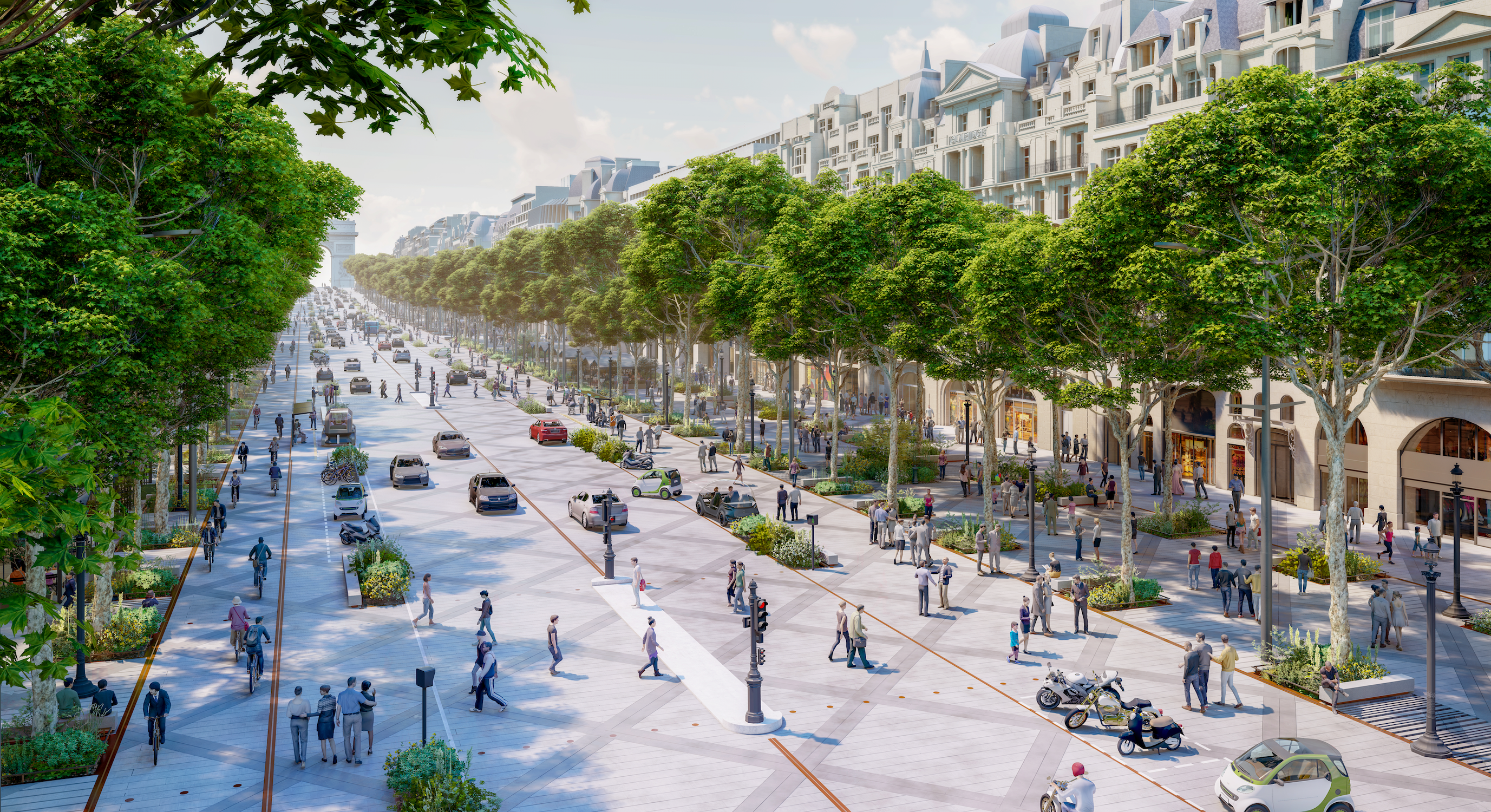Paris set to turn Champs-Élysées into ‘extraordinary garden’
The redevelopment should be completed by 2030 meaning it will not be ready in time for the Olympic Games in Paris

Your support helps us to tell the story
This election is still a dead heat, according to most polls. In a fight with such wafer-thin margins, we need reporters on the ground talking to the people Trump and Harris are courting. Your support allows us to keep sending journalists to the story.
The Independent is trusted by 27 million Americans from across the entire political spectrum every month. Unlike many other quality news outlets, we choose not to lock you out of our reporting and analysis with paywalls. But quality journalism must still be paid for.
Help us keep bring these critical stories to light. Your support makes all the difference.
The Champs-Élysées in the French capital is set to be given a €250m (£225m) green makeover, the mayor of Paris has announced.
Anne Hidalgo, the city’s mayor, told French newspaper Le Journal du Dimanche that the work would make the 1.9 km (1.2 mile) long road into “an extraordinary garden".
The Champs-Élysées committee have been campaigning for change since 2018, when they decided that something needed to be done to spruce up the famous avenue.
The committee is made up of those who live and work on the avenue. It is headed up by Jean-Noël Reinhardt, who previously said that the Champs-Élysées is “often called the world’s most beautiful avenue, but those of us who work here every day are not at all sure about that".
The planned work was first unveiled in 2019 and with the help of the public, plans for the area were drawn up. These include reducing space for vehicles by half, pedestrianising roads and increasing the number of trees planted to help improve air quality there.
Members of the committee released a statement saying: “The legendary avenue has lost its splendour during the last 30 years. It has been progressively abandoned by Parisians and has been hit by several successive crises: the gilets jaunes, strikes, health and economic.” They welcomed the mayor's announcement.
The Champs-Élysées was first laid out in 1670 but was redesigned by Baron Haussmann in the mid 1800s and was last renovated 25 years ago. It is used for the annual Bastille Day parade on 14 July and is also the finishing stretch for the Tour de France.
In spite of the avenue being a popular destination for those visiting the city, Parisians tend to give it a wide berth.
According to architect Philippe Chiambarettam, whose firm PCA-Stream drew up the redevelopment plans, an estimated 100,000 people walk the street each day. Tourists account for 65 per cent and only five per cent are Parisians.
The transformation will not happen before the French capital hosts the Olympic Games in 2024, with aims to complete the project by 2030. Other plans include redesigning Place de la Concorde at one end of the avenue.
The area around the Eiffel Tower is also due a revamp and more fountains, ponds and parks are set to surround the world famous landmark.
The Pont d’Iéna (a bridge linking the Eiffel Tower to Trocadéro) will also be turned into a grassy walkway, lined with trees. This should be ready by 2024 and is being financed by the company who operates the landmark.
In a move to pedestrianise Paris Ms Hidalgo has already shut stretches of both riverside roads to vehicles. She has also changed seven of the city’s major squares to give more space to pedestrians, scooters and cyclists.
The Parisian mayor told Le Journal du Dimanche that the project was one of several planned to transform the city “before and after 2024.”
Join our commenting forum
Join thought-provoking conversations, follow other Independent readers and see their replies
Comments